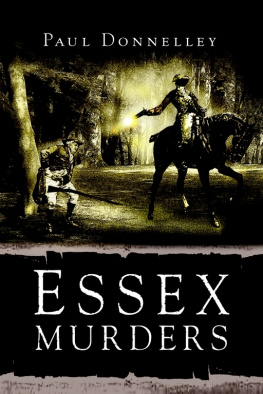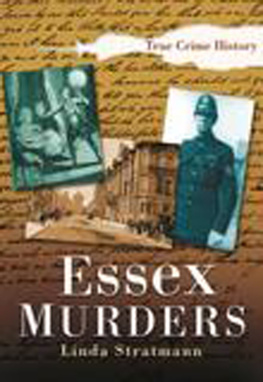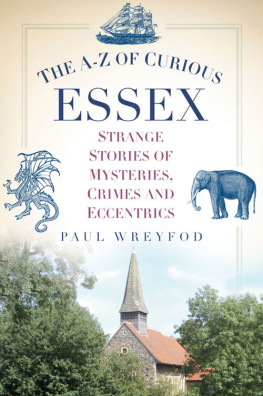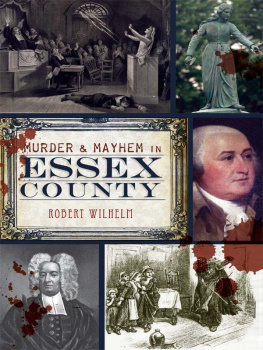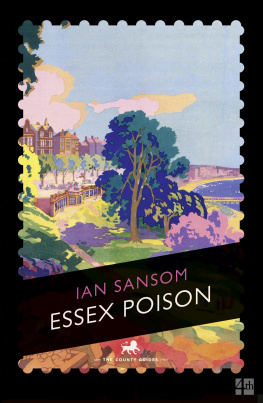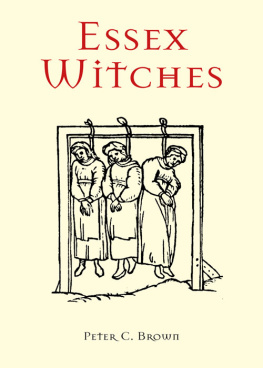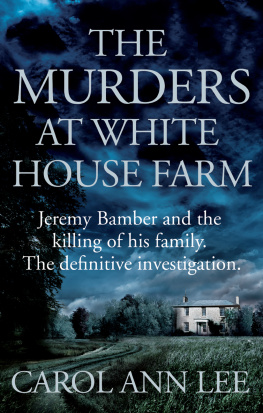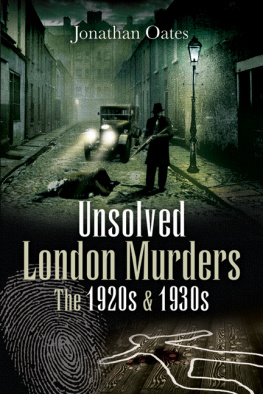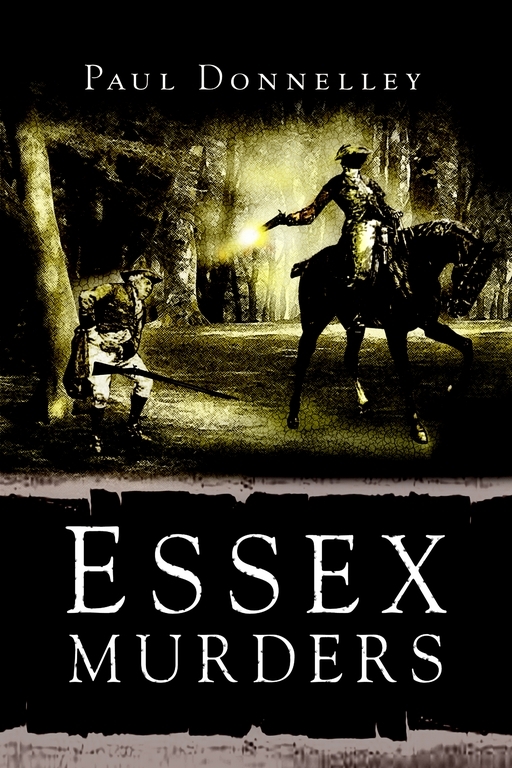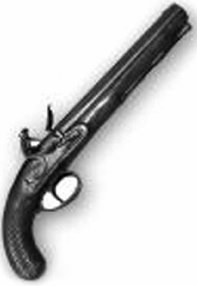Thanks to the following for their help with this book: Becky Latchford, the curator of the Essex Police Museum; my former colleague on The Daily Telegraph , Bill Stock, for suggesting several cases; Ben Davis of the British Medical Association; Dot Bedenham of Chelmsford Museum; and Tony Church of the Telegraph Media Group library.
Chapter 1
The True History of Dick Turpin
That sixpence cost Dick Turpin his life.
T he romantic tale of the highwayman Dick Turpin and his celebrated ride to York on his faithful steed Black Bess is the stuff of legend. Unfortunately, much of what we think we know about Turpin, actually a callous thug, is just that legend. Many facts are in dispute. In this chapter I have attempted to separate fact from fiction.
John Turpin and Mary Elizabeth Parmenter were both born in about 1675. They married in 1695 and Mary gave birth to six children. After ten years of marriage, Mary gave birth to their son Richard, the fifth child, at the Blue Bell inn (later the Rose and Crown ), Hempstead, near Saffron Walden where his father, formerly a butcher, was publican.
He was baptised on 21 September 1705 at Hempstead. Three years later, his mother died, aged thirty-three. Dick had a standard education and then, when he was sixteen, he became apprentice to a butcher in Whitechapel. It was said that during his apprenticeship, he conducted himself in a loose and disorderly manner.
In 1725 (or possibly 1728), he married Elizabeth (Betty) Millington, a maid. Two years later, Mr and Mrs Richard Turpin moved to Buckhurst Hill and there opened a butchers shop. The shop did not get its supplies in the usual manner. Turpin began stealing sheep, lamb and cattle from local farmers, which was regarded as so serious an offence in those days that it was punishable by death. Historians have different opinions as to why Turpin became a villain. Some believe it was out of financial necessity but others think he was just a sensation seeker. However it happened, Turpin tired of the mundane life of a butcher and turned to a life of crime. He was caught stealing two oxen from a Mr Giles of Plaistow and fled with customs men hot on his trail. Turpin ran into the depths of the Essex countryside, leaving his wife and butchers shop behind. For a time, he lived in caves along the coast of East Anglia, and supported himself by robbing the smugglers who operated there. He took up with a twenty-strong gang, led by the blacksmith Samuel Gregory, that stole deer in the royal forest of Epping. Dick Turpin, the name by which he is known to history, was employed as their fence. The authorities more or less ignored the deer rustling until the reward for the gangs capture was increased.
The Gregory Gang (also known as the Essex gang) which also included Samuels brothers, Jasper and Jeremy was notorious around Essex and London. The gang included Thomas Hadfield, Thomas Barnfield, Thomas Rowden, Mary Brazier, John Fielder, Herbert Haines, John Jones, James Parkinson, Joseph Rose, Ned Rust, William Saunders, Humphry Walker, and John Wheeler. Whether through bravado or stupidity they poached royal game. They tried to rob a house at Woodford but the local villagers spotted the attempt and drove them away. The first successful attack was at the house of Mr Strype, an old man who kept a chandlers shop at Watford. The Gregory Gang robbed him of all the money in his possession, but did not threaten him.
On 11 January 1735, Turpin and five of the gang went to the house of Mr Saunders, a rich farmer at Charlton in Kent, at around 7 pm. They burst in and discovered Saunders, with his wife and friends, playing at cards in the parlour. They told the company to stay still and they would come to no harm. They took a silver snuffbox and china worth 100. The maid ran upstairs and shouted for help from the window. The brigands broke in and tied her up before ransacking the rest of the house. They found some mince pies and wine and sat down to eat. As they left, the gang said that if anyone raised the alarm within two hours they would return and kill them all. A week later, they stole eleven guineas, jewels and china from a Mr Sheldon, of Croydon, in Surrey but then with pangs of guilt returned two guineas and apologised for their behaviour.
In that year the Essex Gang became a regular in newspapers. On 8 February 1735 Reads Weekly Journal reported:
On Saturday [1 February] night last, about seven oclock, five rogues entered the house of Widow Shelley at [Traps Hill] Loughton in Essex, having pistols. And threatened to murder the old lady, if she would not tell them where her money lay, which she obstinately refusing for some time, they threatened to lay her across the fire, if she did not instantly tell them, which she would not do. But her son being in the room, and threatened to be murdered, cried out, he would tell them, if they would not murder his mother, and did, whereupon they went upstairs, and took near 100, a silver tankard, and other plate, and all manner of household goods. They afterwards went into the cellar and drank several bottles of ale and wine, and broiled some meat, ate the relicts of a filet of veal. While they were doing this, two of their gang went to Mr Turkles, a farmer, who rents one end of the widows house, and robbed him of above 20, and then they all went off, taking two of the farmers horses, to carry off their luggage, the horses were found on Sunday the following morning in Old Street, and stayed about three hours in the house.
Their next target was a farmer near Barking. When he refused to open the door, they broke it down and tied him up, along with his wife, his son-in-law and the maidservant. They stole more than 700 causing Dick to cry out, Aye, this will do if it would always be so! Each of the robbers took 80 each.
On 4 February they robbed Mr Lawrence, of Edgware, Middlesex, after getting drunk in a pub beforehand. They stole silver, china, money and threw a kettle of boiling water over him. One of the gang raped Mr Lawrences maid. On 7 February, they broke into the house of Mr Francis, a farmer near Mary-le-bone, having first tied up his servant outside. Mrs Francis, her daughter, and the maidservant were tied up and beaten. The gang stole a silver tankard, a medal of Charles I, a gold watch, several gold rings, a considerable sum of money, and a variety of valuable linen and other effects. A reward of 100 was offered.
In February 1735, Turpin and the three Gregory brothers attacked the Earl of Suffolks servant in Epping Forest and stole his horse valued at 80. A few weeks later, Sir Caesar Child was attacked in the forest by the gang who shot off the tip of his coachmans nose. They stole 25.
On 18 February 1735 three members of the gang were recognised and arrested in the Punch House , King Street, Bloomsbury. One of them, John Wheeler, turned informer and on his evidence the authorities captured three further members within the week. Samuel and Jeremy Gregory tried to flee to the Continent, but were captured at Hindhead after robbing Sir John Osborne in order to pay their fare. Of all the gang, only Turpin and Thomas Rowden, a pewterer, were still at large, the rest either being hanged or dying in jail.
Turpin and Rowden stopped robbing remote farmhouses and turned their dubious skills to robbing stagecoaches passing through Epping Forest. They also began highway robbery south of the Thames but their partnership ended in May 1736 when Rowden changed his name to Daniel Crispe and moved to Gloucester, where he was captured and convicted of counterfeiting.

